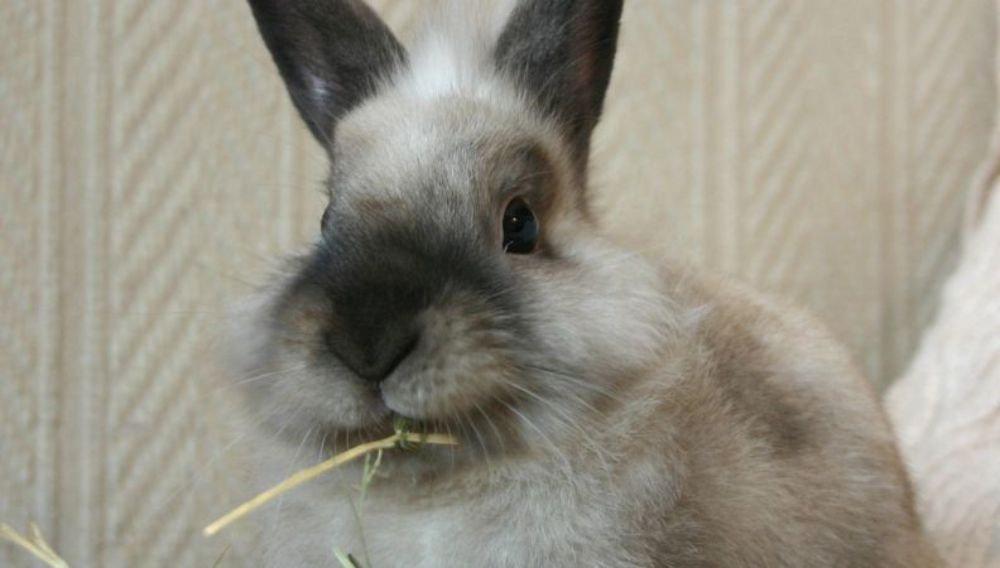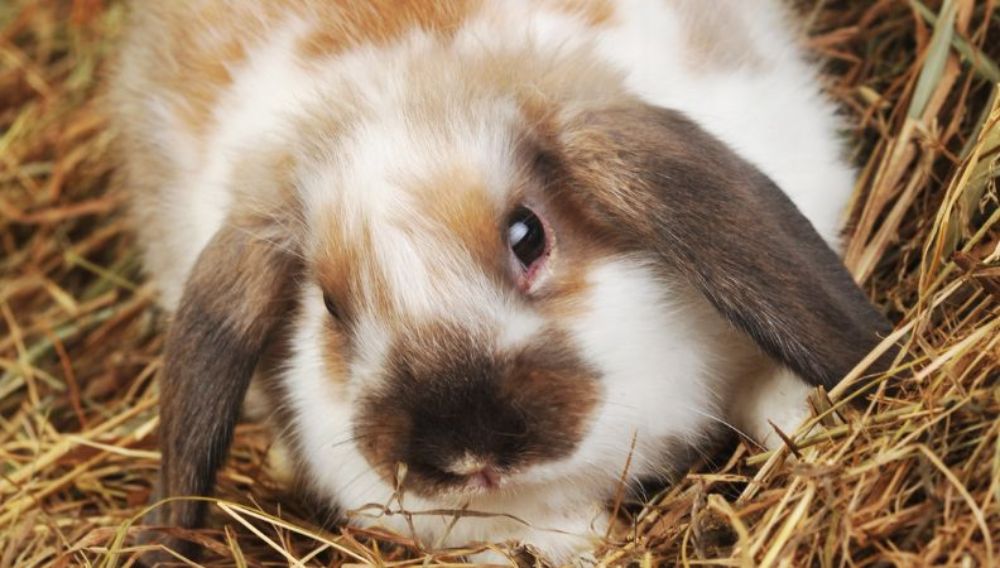
If you think feeding your bunny will be a doddle, you may be surprised to learn that it’s not that easy! Rabbits have a very delicate and complicated digestive system. This means the way you feed your bunny is very important.
Veterinary research has shown that many common rabbit conditions could be prevented by simply feeding the correct diet. Whether you have a young rabbit or a big bunny it’s essential to know what rabbits need to eat. So here's all you need to know about the do's and don’ts about food for rabbits.
Why a Rabbit’s Diet is so Important?
A rabbit’s digestive system is designed to never be empty. It must constantly have food working its way through the intestines and stomach. This is only possible if rabbits have a high-fibre diet with moderate amounts of protein and low in carbohydrates.
Unfortunately, a poor diet can lead to common conditions like dental disease, obesity, diarrhoea, fly strike, gastrointestinal stasis, and snuffles. Some of these conditions can be fatal, even in just a few hours, making it even more important to make sure you give your rabbit the best possible diet.
If your rabbit stops eating, speak to your vet immediately for advice.
What Do Rabbits Eat?
It might be tempting to spoil your bunny with carrots, dandelions and other sweet treats, but pet rabbits should have the same diet as wild rabbits. Wild rabbits mainly eat grass and hay making their diet very high in fibre. Nowadays lil bunnies and adult rabbits are fed too much concentrated mixes, an ideal balanced diet should be made up of 80% hay and grass, 15% fresh greens and 5% pellets or nuggets.
Rabbits fed a concentrated mix tend to pick out their favourite bits of food. This is called selective feeding, but the bits of food are usually high in sugar and low in fibre. To avoid selective feeding, feed your rabbit pellets or nuggets instead. They're high in fibre and nutritionally balanced for good digestive health, but must still be fed in moderation.
Rabbits should have around 1 level tablespoon of pellets per kg of ideal bodyweight every day. The rest of their diet should consist of an unlimited amount of hay and grass, and some fresh vegetables – a pile of veg the size of their own body each day should do the trick.
Avoid sugary rabbit treats from pet shops as they have poor nutritional value.
And don’t forget to give your bunny access to clean water at all times. Ideally in a heavy, ceramic water bowl that can’t be tipped over, a bottle is fine, but a bowl is naturally easier for them. Give them fresh water a couple of times a day, and more often when it’s hot so they don’t run out, and when it’s cold when the water may freeze.
Feed Your Rabbit Hay and Grass
So, what sort of hay should you feed your rabbit? Generally, hay sold in bales for horses is better quality than the bagged hay you’ll find in a pet shop. Good fresh hay will smell sweet, be dry but not dusty, and mould-free. Don’t store it in bags as it sweats and goes mouldy, especially in warmer weather, instead somewhere dry and out of direct sunlight.
When feeding hay, use a rabbit hay feeder so it doesn’t get dirty with droppings or urine.
Ideally, your bunny should be allowed to graze on fresh grass in your garden in a secure run for a few hours every day. But this isn’t always possible, you can get around this by growing grass in pots or trays. Or you can let the grass in your garden grow long and pick some every day for your rabbit to nibble on. Packs of freeze-dried grass are also available for rabbits from pet shops.
Grass must always be eaten freshly cut. NEVER give your bunny lawnmower clippings as these ferment quickly and cause tummy upsets.
Sometimes rabbits aren’t very keen on grass or hay, but don’t worry, there are ways of encouraging your bunny to eat both of these. You can tempt them with a toy, chop it up into small pieces and mix it in with their pellets or veggies. There's also different types of hay, your bunny may prefer one type to another.
Hay can be soft, course, long stranded, short stranded, green or brown, some even contains wild flowers and herbs, this may well tempt them to give it a taste.
What Vegetables and Greens Do Rabbits Eat?
We all know that veggies are good for us… they’re good for our bunnies too! You can give your rabbit some fresh veg and greens every day. A variety of these will keep your rabbit interested in their food.
Foods like broccoli, celery, clover, parsley, coriander, amongst others, are very good for your rabbit. Others like carrots and sugary fruits aren’t very nutritious and as they're high in sugar they should be avoided. Dark leafy greens like kale, spring greens and dandelions contain a lot of calcium so should only be fed in moderation. They shouldn’t be fed to your bunny if they have a urinary or bladder problem.
Always wash vegetables and greens before you give them to your rabbit. And only every give your bunny fresh veggies. If there are any signs of wilting or they’ve gone off, just throw them away!
Should I Feed My Rabbit a Commericial Mix?
Some owners feed their rabbits a commercial mix. Some are made up of extruded feed where the pieces of food all look the same, and others are made up of a mix of different types of dried cereals and vegetables. If you decide to feed your rabbit a dried cereal and veg mix, leave the food in their bowl until most of it has been eaten to prevent selective feeding.
If you’re unsure how much to feed your rabbit, check the feed packaging for recommended amounts. Weigh it out to avoid overfeeding as this can lead to obesity and bladder problems.
Remember that your rabbit doesn’t NEED a mix, they’re generally healthier if fed just hay, grass and vegetables.

What Should I Do if I Need to Change My Rabbit’s Diet?
If you do, it’s important to do this very slowly, ideally over a couple of weeks, this will give your rabbit’s digestive system time to adjust to the changes. If you want to move your rabbit onto a healthy diet, feed them hay, grass and greens. If you’re feeding a mix, change it to high-fibre pellets or nuggets. Grass and greens should be introduced gradually to prevent tummy upsets and diarrhoea.
When changing your rabbit’s diet, mix any new foods in small amounts into the same feeding bowl with your rabbit’s usual food. Do this for 3 to 4 days. If your rabbit seems to be happily accepting the new diet, gradually increase the quantity of new food over the next week or so and reduce the old food until they’re eating 100% of their new food.
Make diet changes very slowly and in small quantities to begin with, and always keep an eye out for any changes in their eating behaviour like loss of appetite, bloating, very runny droppings, or changing behaviour. These could be a sign of a potential problem which means you may need to act quickly. If in doubt, ask your vet for advice.
Everypaw Rabbit Insurance
Here at Everypaw, we want to help you keep your bunny healthy and in tip top shape. So, when it comes to your young rabbit’s care, Everypaw’s Rabbit Insurance could be just the cover to look after your little thumper.
Content provided from Vetstream's Vetlexicon Lapis – www.vetlexicon.com/treat/lapis
Vetlexicon is the world’s largest peer-reviewed online clinical reference source. All our content is written and peer-reviewed by over 1,000 of the world’s leading veterinarians, ensuring relevance, accuracy and quality.
- Speight C, Mancinelli E & Hamlin J (online) Dental disease. In: Vetlexicon Lapis. Vetstream Ltd, UK. Website: https://www.vetlexicon.com/treat/lapis/client-information/dental-disease
- Thompson L & Speight C (online) Diarrhea. In: Vetlexicon Lapis. Vetstream Ltd, UK. Website: https://www.vetlexicon.com/treat/lapis/client-information/diarrhea
- Vetstream Ltd (online) Feeding your rabbit. In: Vetlexicon Lapis. Vetstream Ltd, UK. Website: https://www.vetlexicon.com/treat/lapis/client-information/feeding-your-rabbit
- Vetstream Ltd & Speight C (online) Fly strike. In: Vetlexicon Lapis. Vetstream Ltd, UK. Website: https://www.vetlexicon.com/treat/lapis/client-information/fly-strike
- Vetstream Ltd & Speight C (online) Gastrointestinal stasis. In: Vetlexicon Lapis. Vetstream Ltd, UK. Website: https://www.vetlexicon.com/treat/lapis/client-information/gastrointestinal-stasis
- Vetstream Ltd & Speight C (online) Grass and hay. In: Vetlexicon Lapis. Vetstream Ltd, UK. Website: https://www.vetlexicon.com/treat/lapis/client-information/grass-and-hay
- Vetstream Ltd & Cousquer G (online) Obesity. In: Vetlexicon Lapis. Vetstream Ltd, UK. Website: https://www.vetlexicon.com/treat/lapis/client-information/obesity-in-your-rabbit
- Vetstream Ltd (online) Snuffles – the facts. In: Vetlexicon Lapis. Vetstream Ltd, UK. Website: https://www.vetlexicon.com/treat/lapis/client-information/snuffles-the-facts